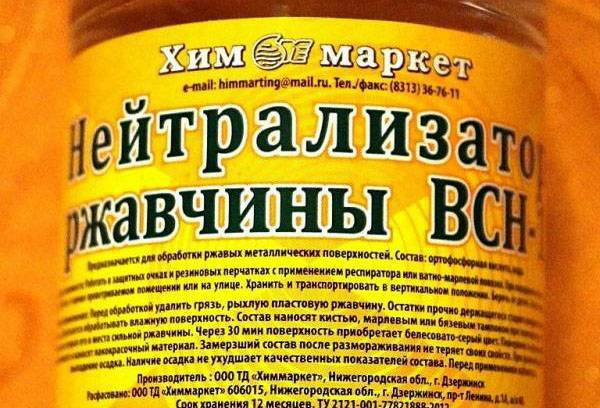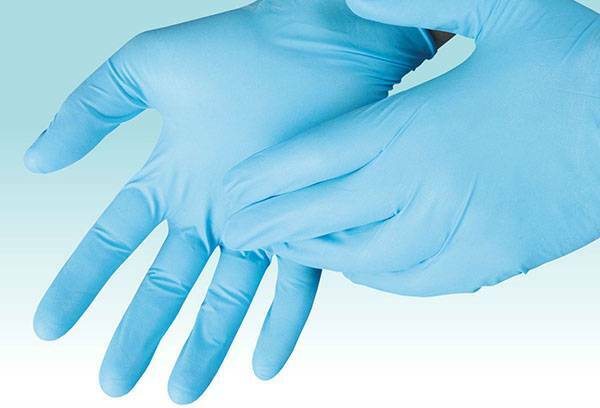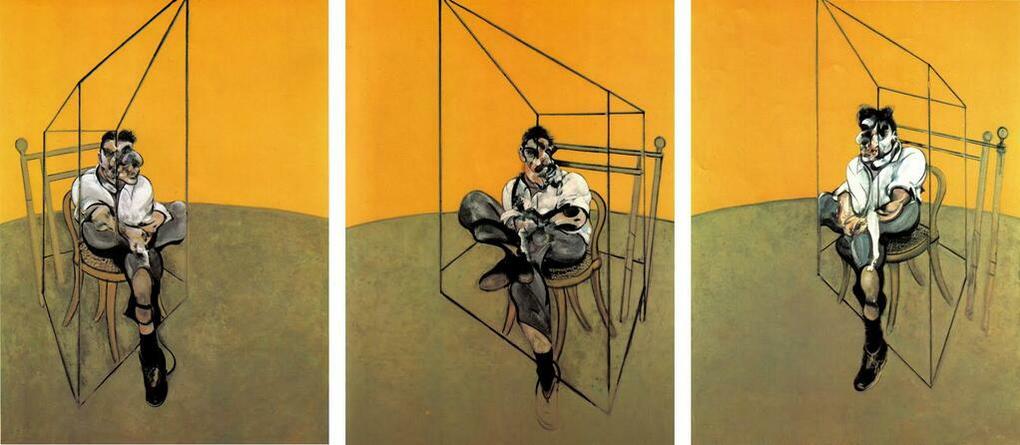Contents:
- Release form and principle of operation
- Instruction for use
- What do consumers say?
- Safety of machined surfaces
Rust does not paint any surface. .. unless, of course, the owners of the house do not adhere to a strange glance at each flaw and do not notice in it something interesting and inviting. In order to clean the corrosion traces( and rust is just the result of it), it is worth using the VSN-1 rust neutralizer.

Form release and operating principle
The rust neutralizer is available in the form of liquid, poured into containers of different volumes, most often - 0.5 and 1 liter, but there are also variants when the composition of BCH 1 is offered to buyers in a 5 liter canister, however this is a rarity.
Before talking about the action of the substance itself, we will make a small digression and recall the school course of inorganic chemistry. In general, rust in everyday use is any product of contact between iron and oxygen in the presence of water or air. In other words, rust is most often iron oxide. We also mention that this is only a general concept, and therefore not every iron oxide is rust, this word means the result of corrosion.
Iron oxide refers to amphoteric, that is, those that are capable of exhibiting properties of both acids and bases. That is why the composition of BCH 1 enters into a neutralization reaction with rust: chemistry is the science of opposites, therefore, acids neutralize bases, ie, alkalis.
Manufacturers do not provide a detailed list of substances used in the manufacture of the neutralizer, but the inquisitive people analyzed and determined that sulfuric or hydrochloric acid( in other words, "strong", aggressive acid) is most likely to form, which dissolves rust and makesits susceptible to removal. In addition, sometimes manufacturers together with one of these acids also use orthophosphoric. However, it is necessary to use the neutralizer with caution, do not inhale its vapors and, when working, cover the open areas of the skin.

Instruction for use
We decided that it would not be superfluous to place instructions for the use of the rust neutralizer, as, unfortunately, practical bottles are not placed on the bottles.
- The first step is to determine how bad it all is: the area of the affected surface, the height of the rust, check if it is peeling off.
- Then, if the rust still peels off, try removing it with a metal brush or sponge, if something like that is available.
- After that, you can already try to apply a neutralizer.
Advice
It is best to pour the liquid on an unnecessary rag and put it on the rust. Before this, of course, it is important not to forget to wear gloves.
- After a while, you can check the result. If the reaction has passed as required, all rust will wash off the affected surface. If not, it is worth trying again, especially if the cast is simply not enough.

And what do consumers say?
But in theory, it is impossible to make good( or, conversely, bad) properties of the BCH 1 composition, so many of us are eager to look for real reviews on the Internet. In order to make it easier for our readers to solve the problem, we ourselves read many publications of ordinary people, and now we can say with confidence that the majority of users of the Russian segment of the World Wide Web praise the neutralizer for efficiency and profitability( as of the end of May 2016, a 0.5 liter bottle can be purchasedfor 40-60 rubles, which, of course, is very cheap - in Moscow, for example, even travel costs more).However, these same people argue that the effectiveness lies in aggressiveness and insecurity: the neutralizer is fire dangerous, can damage the mucous membrane by inhaling fumes and generally requires a careful attitude. True, low price and efficiency still covers these disadvantages, which, when properly handled with liquid, are invisible.

Safety of machined surfaces
We are talking about an aggressive tool, which means that it's worth mentioning precautions. So, do not neglect the danger of dissolving car polish or enamel baths under the influence of "strong" acids in the solution. Simply put, we strongly advise you to closely monitor how long the hero of our today's article is in contact with the surface.
We hope that our material was useful for you, you have learned something new and interesting for yourself and, probably, have already decided that on the next trip to the building store you will necessarily purchase a bottle of VSN-1 rust neutralizer for it to always beat hand. Let the metal surfaces in your house always sparkle and delight with its pristine beauty, and rust bypasses them by seven roads: in case of which it will face a certain death in the form of a neutralizer.



